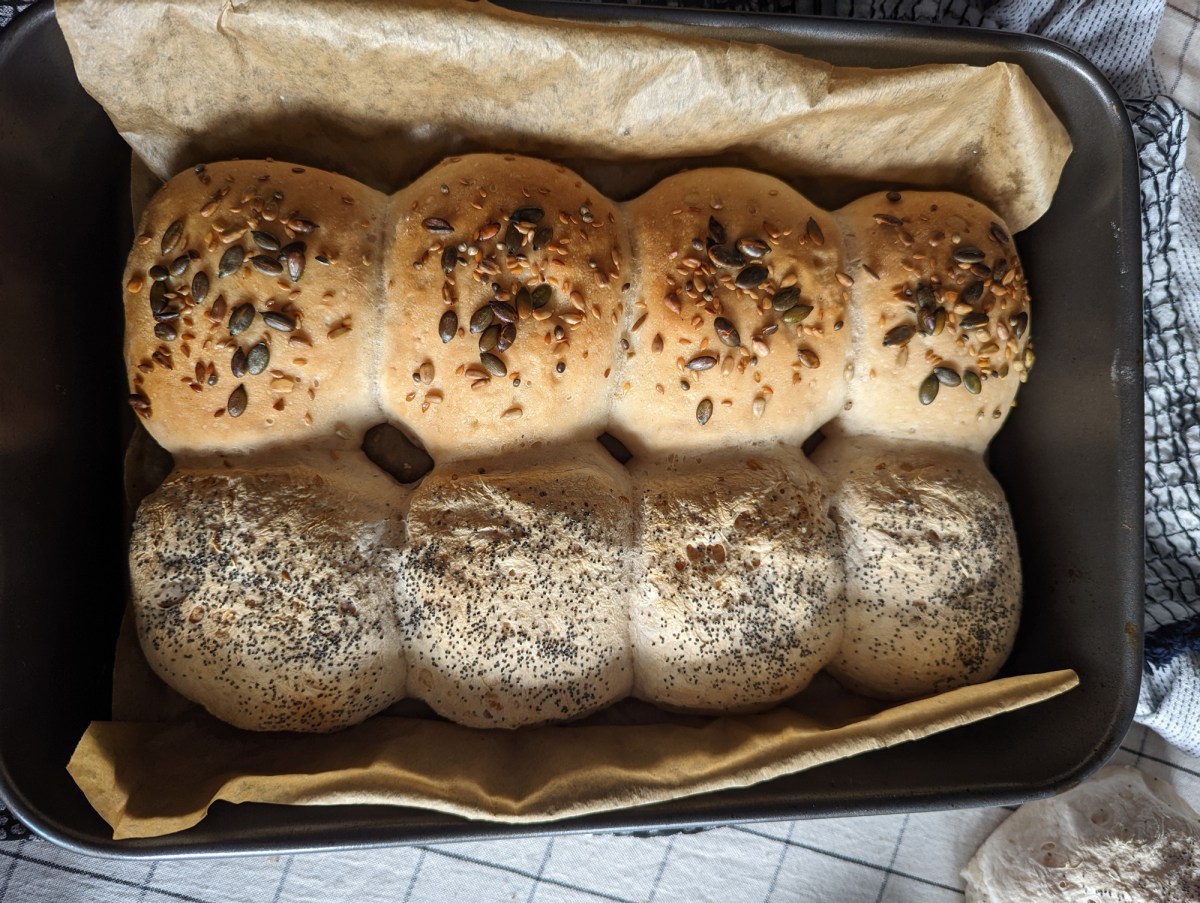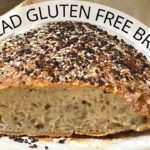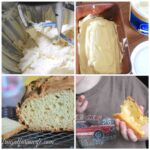Imagine the warm, inviting aroma of freshly baked bread filling your home during the holidays, a scent usually reserved for those without dietary restrictions. This year, break free from gluten limitations and embrace the joy of creating delectable, festive breads that are both delicious and inclusive. This guide unveils the secrets to crafting perfect gluten-free dinner rolls, sweet loaves, and other holiday treats, transforming your celebrations with flavor and delight.
We’ll explore a variety of gluten-free flours, each contributing unique textures and tastes to your creations. From the delicate crumb of almond flour to the subtly sweet notes of rice flour, we’ll guide you through the nuances of each, offering troubleshooting tips to overcome common challenges in gluten-free baking. Learn to achieve that coveted light and airy texture, even without gluten, and discover innovative ways to present your masterpieces, transforming a simple loaf into a stunning centerpiece.
Recipe Development
Crafting delicious gluten-free holiday breads requires careful consideration of ingredient selection and baking techniques. The absence of gluten, the protein responsible for structure in traditional bread, necessitates the use of alternative binding agents and careful manipulation of moisture levels to achieve a light and airy crumb. This section details three unique gluten-free holiday bread recipes, along with essential tips and troubleshooting advice.
Gluten-Free Dinner Rolls
These soft and fluffy dinner rolls are perfect for accompanying your holiday feast. Their delicate texture and subtle sweetness make them a crowd-pleaser.
- Ingredients: 1 cup gluten-free all-purpose flour blend, ½ cup tapioca starch, 2 teaspoons xanthan gum, 2 teaspoons baking powder, ½ teaspoon salt, 2 tablespoons sugar, ¼ cup melted unsalted butter, 1 cup warm milk (dairy or non-dairy), 1 large egg, 1 teaspoon vanilla extract.
- Instructions: Preheat oven to 400°F (200°C). In a large bowl, whisk together the gluten-free flour blend, tapioca starch, xanthan gum, baking powder, salt, and sugar. In a separate bowl, whisk together the melted butter, warm milk, egg, and vanilla extract. Add the wet ingredients to the dry ingredients and mix until just combined. Do not overmix. Shape the dough into 12 small rolls and place them on a baking sheet lined with parchment paper. Bake for 15-20 minutes, or until golden brown.
Gluten-Free Cranberry Orange Sweet Loaf
This festive loaf combines the tartness of cranberries with the bright citrus notes of orange, creating a delightful holiday treat. The moist crumb and vibrant color make it a beautiful centerpiece for your dessert table.
- Ingredients: 1 ½ cups gluten-free all-purpose flour blend, 1 teaspoon baking powder, ½ teaspoon baking soda, ½ teaspoon salt, ½ cup granulated sugar, ¼ cup brown sugar, ¼ cup melted unsalted butter, 1 large egg, 1 teaspoon vanilla extract, ½ cup orange juice, 1 cup fresh or frozen cranberries.
- Instructions: Preheat oven to 350°F (175°C). Grease and flour a 9×5 inch loaf pan. In a large bowl, whisk together the gluten-free flour blend, baking powder, baking soda, and salt. In a separate bowl, cream together the granulated sugar and brown sugar with the melted butter. Add the egg and vanilla extract and mix well. Gradually add the dry ingredients to the wet ingredients, alternating with the orange juice, and mix until just combined. Fold in the cranberries. Pour the batter into the prepared loaf pan and bake for 50-60 minutes, or until a toothpick inserted into the center comes out clean.
Gluten-Free Festive Herb and Cheese Bread
This savory bread, infused with aromatic herbs and sharp cheddar cheese, offers a unique twist on traditional holiday baking. Its robust flavor profile complements a variety of dishes.
- Ingredients: 1 ½ cups gluten-free all-purpose flour blend, 1 teaspoon baking powder, ½ teaspoon salt, ½ cup grated sharp cheddar cheese, ¼ cup chopped fresh rosemary, ¼ cup chopped fresh thyme, 1 cup milk (dairy or non-dairy), 2 large eggs, 2 tablespoons olive oil.
- Instructions: Preheat oven to 375°F (190°C). Grease and flour a 9-inch round baking pan. In a large bowl, whisk together the gluten-free flour blend, baking powder, and salt. Stir in the cheese, rosemary, and thyme. In a separate bowl, whisk together the milk, eggs, and olive oil. Add the wet ingredients to the dry ingredients and mix until just combined. Pour the batter into the prepared pan and bake for 35-40 minutes, or until golden brown and a toothpick inserted into the center comes out clean.
Tips and Techniques for Gluten-Free Bread Baking
Achieving optimal texture and rise in gluten-free bread requires attention to detail. Proper ingredient selection and technique are crucial for success.
- Use a high-quality gluten-free flour blend: Look for blends that contain a variety of flours, such as brown rice flour, tapioca starch, and potato starch, for the best results. Xanthan gum is a vital ingredient for binding.
- Don’t overmix the dough: Overmixing can lead to a tough crumb. Mix only until the ingredients are just combined.
- Add moisture gradually: The amount of liquid needed can vary depending on the flour blend. Start with the lower end of the recommended amount and add more as needed to achieve a workable consistency.
- Let the dough rest: Allow the dough to rest for at least 10-15 minutes after mixing to allow the gluten-free flour to hydrate properly.
- Bake at the correct temperature: Oven temperature is crucial. Too low a temperature will result in a dense loaf, while too high a temperature will lead to burning.
Troubleshooting Common Gluten-Free Bread Problems
Addressing common issues proactively ensures a successful baking experience.
- Crumbly Texture: This often indicates insufficient moisture. Try adding a tablespoon or two of liquid at a time until the dough reaches the desired consistency. Ensure your flour blend is fresh.
- Dense Loaf: A dense loaf is usually caused by underbaking, insufficient leavening, or overmixing. Check your oven temperature, ensure your baking powder/soda is fresh, and avoid overmixing the dough.
Step-by-Step Baking and Visual Descriptions

This section details the process of baking a delightful Gluten-Free Cranberry Orange Sweet Loaf, from mixing the initial ingredients to the final golden-brown bake. We’ll focus on the visual changes in the dough throughout each stage, offering a sensory journey alongside the precise instructions.
Gluten-Free Cranberry Orange Sweet Loaf: A Step-by-Step Guide
This recipe yields one 9×5 inch loaf. The visual descriptions will help you track the progress of your dough, ensuring a successful and delicious outcome.
- Preparing the Dry Ingredients: Begin by preheating your oven to 350°F (175°C). In a large bowl, whisk together 2 cups gluten-free all-purpose flour blend, 1 teaspoon baking soda, ½ teaspoon baking powder, ½ teaspoon salt, and 1 teaspoon ground cinnamon. The mixture will appear light and fluffy, a pale beige color punctuated by the darker flecks of cinnamon.
- Combining Wet Ingredients: In a separate bowl, whisk together 1 cup granulated sugar, ½ cup unsweetened applesauce, ¼ cup melted unsalted butter (slightly cooled), 2 large eggs, 1 teaspoon vanilla extract, and the zest of one orange. This mixture will be a pale, golden-yellow, with a slightly viscous consistency. The orange zest adds tiny specks of bright orange throughout.
- Bringing it Together: Gradually add the wet ingredients to the dry ingredients, mixing gently with a rubber spatula until just combined. Do not overmix. The dough will be slightly sticky and moist, a pale golden color with visible cranberry pieces and orange zest. It will be noticeably thicker than a typical cake batter, but still relatively smooth.
- Incorporating Cranberries and Nuts (Optional): Gently fold in 1 cup fresh or frozen cranberries (if frozen, do not thaw) and ½ cup chopped walnuts or pecans (optional). The cranberries add pops of vibrant red, while the nuts add flecks of brown to the otherwise uniform dough. The dough will now appear more textured, with the inclusions of cranberries and nuts.
- First Rise: Pour the batter into a greased and floured 9×5 inch loaf pan. The batter will fill the pan about ¾ full. Let it rise in a warm place for about 30-45 minutes, or until it has risen slightly and appears puffy. The dough will have a slightly lighter and airier texture, expanding to almost fill the loaf pan. The surface may show small bubbles forming.
- Baking: Bake for 50-60 minutes, or until a wooden skewer inserted into the center comes out clean. The loaf will rise considerably during baking, developing a deep golden-brown crust. The aroma of baking bread, cinnamon, and cranberries will fill the kitchen.
- Cooling and Serving: Let the loaf cool in the pan for 10 minutes before transferring it to a wire rack to cool completely. Once cool, slice and serve. The cooled loaf will have a slightly firm texture, with a moist crumb and a delicate, slightly sweet flavor.
This holiday season, banish the notion that gluten-free baking is difficult or bland. With the right techniques and a touch of creativity, you can craft gluten-free breads that are not only delicious but also visually stunning, impressing even the most discerning palates. From the perfectly golden-brown crust of a dinner roll to the moist, flavorful interior of a sweet loaf, your holiday table will overflow with festive cheer and unforgettable flavors, proving that deliciousness knows no dietary boundaries.
Helpful Answers
Can I freeze gluten-free bread?
Yes! Freeze baked bread for optimal freshness. Wrap tightly in plastic wrap and then foil before freezing for up to 3 months. Thaw overnight in the refrigerator and reheat gently.
What’s the best way to store gluten-free bread?
Store gluten-free bread in an airtight container at room temperature for up to 3 days or in the refrigerator for up to a week. Freezing is recommended for longer storage.
Are all gluten-free flours interchangeable?
No. Different gluten-free flours have varying properties. Experimentation is key, but recipes often specify particular flours for optimal results. A blend is often best.
How can I make my gluten-free bread less crumbly?
Ensure proper hydration of the dough, use a good quality gluten-free flour blend, and avoid overmixing. Adding xanthan gum or psyllium husk can also improve texture.


